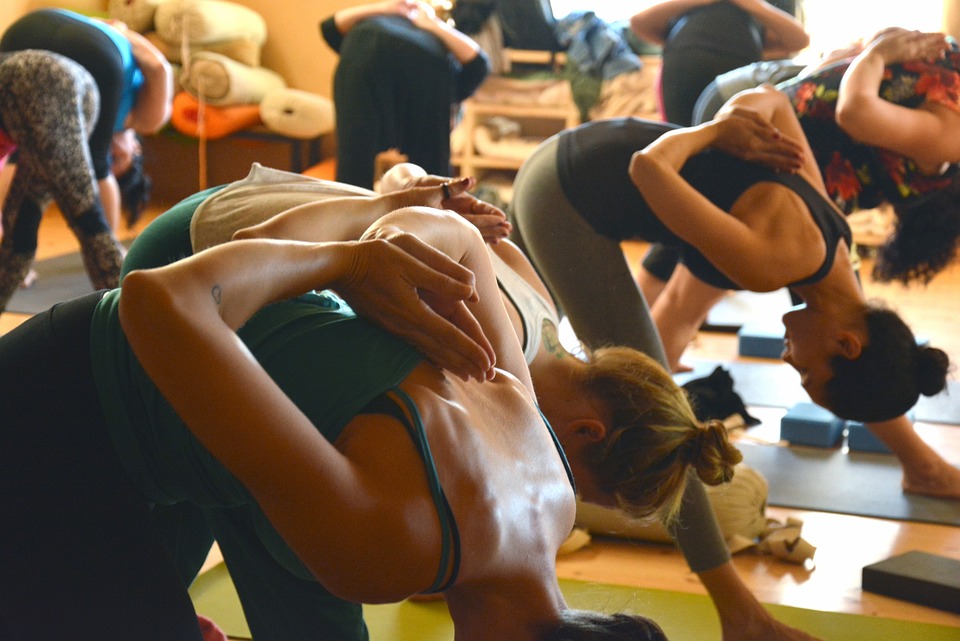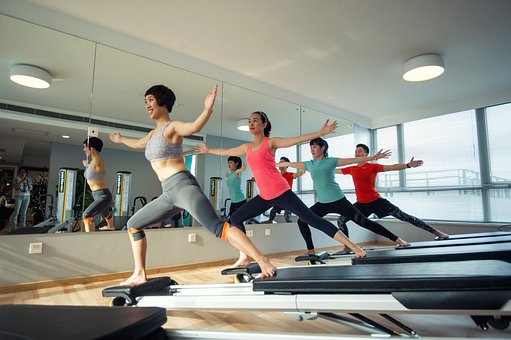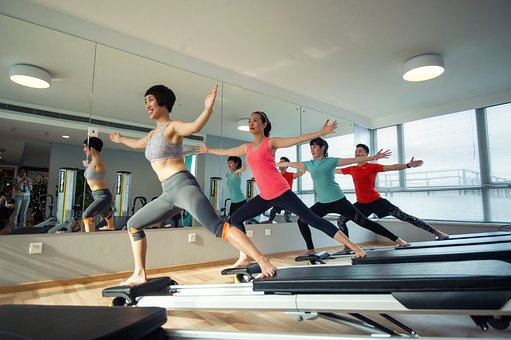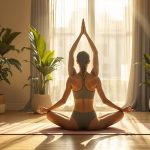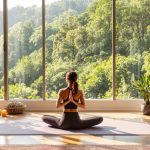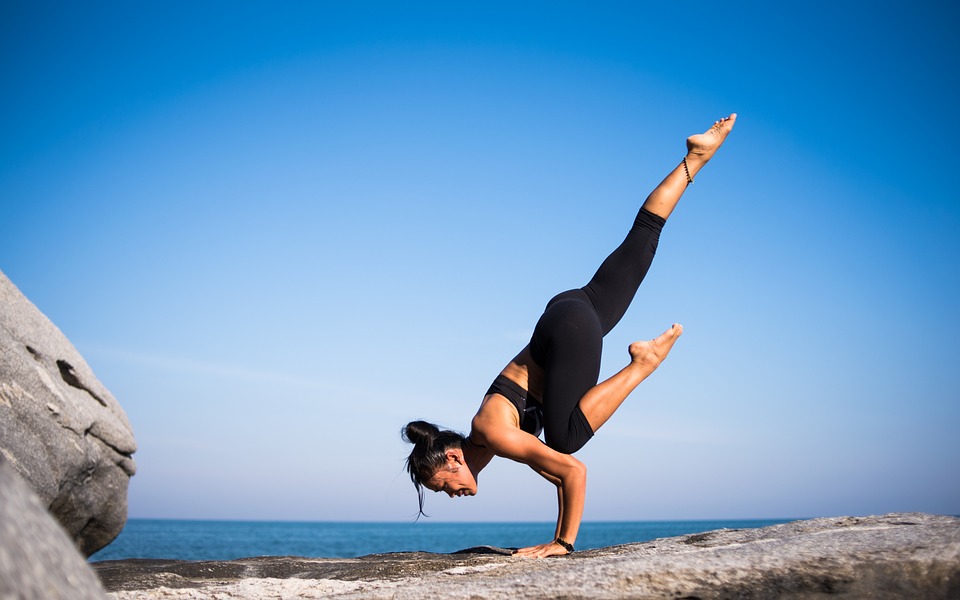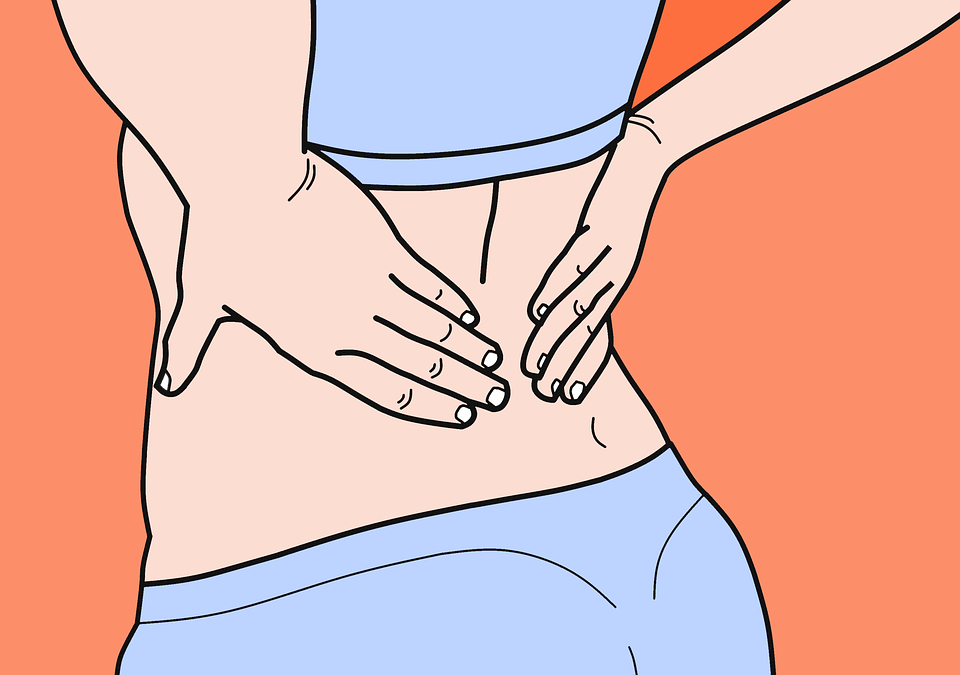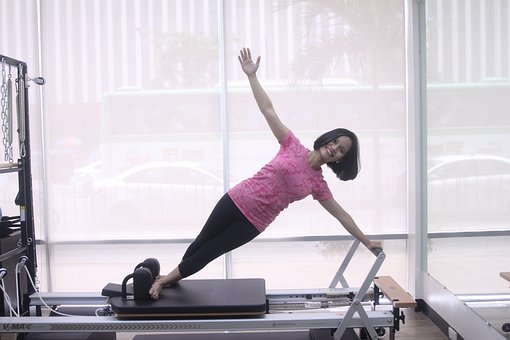
Pilates is an exercise regimen in which movements are done repeatedly utilizing a yoga mat or various apparatuses in order to increase strength, stability, and suppleness. Pilates techniques strengthen the body’s muscles, primarily those in the torso region. This method helps to sharpen one’s consciousness of their physical form to carry out daily activities in an effective and stylish way. Pilates has long been beloved by dancers, yet it has a large fan-base beyond them. Joseph Pilates designed and introduced the Pilates Method in the 1920s.
Those who promote Pilates point to the capacity of the practice to tone the core muscles to enhance posture and balance. Pilates focuses on the “core” muscles, such as the glutes, hips, pelvic floor, and lower back. The Pilates Method, much like yoga, encourages one to take slow and mindful breaths. Pilates is not only popular within rehabilitation circles, but it is also great for fitness enthusiasts as well as professional athletes.
What is Pilates?
Core strength is the foundation of how Pilates works. Strengthening the core develops stability throughout the entire torso. Pilates has been shown to be a beneficial method for many people in terms of relieving back pain.
The most critical point of Pilates practice is having a strong torso, which is attained by properly engaging the core muscles, as this determines how the body functions in not only training sessions and the gym, but in everyday life too. Joseph Pilates’ desired effect was to come up with a system that would promote agility, adeptness, and productivity in the body. A body must have both a robustness and elasticity to it, as well as specific kinds of motion, including being well-grounded and leveled; a mixture of both flowingness and restraint.
Every workout involving Pilates principles adopts these attributes. By doing exercises that imitate everyday activities, muscles are built in an even way, resulting in an elongated and toned look.
Achieving strength without bulk draws many people to Pilates. The technique indicates that attaining even muscle strength comes from exercising the body to move in balance and with proficiency. Pilates purports that an uneven physique can cause muscles to decrease in strength, possibly creating offsets in the body stopping a joint from making the most of its full scope of motion.
The Pilates technique also prioritizes quality over quantity. Instead of doing multiple repetitions for each move, Pilates workouts only incorporate a few reps for each exercise. The objective is to accomplish noteworthy effect in a shorter duration through executing each exercise carefully and concentrating on the breath.
Deep breathing is also fundamental to Pilates. When you inhale, make sure to exhale completely in order to get rid of the used air and let fresh air enter. Enhanced respiration and circulation enable the body to work efficiently beginning from the inside.
Joseph Pilates declared that being able to breathe correctly was the most important thing to learn. Full, deep breathing feeds and stimulates the circulatory system.
The 6 Pilates Principles
There are six principles of Pilates. The Pilates technique’s beliefs are encapsulated in the statement and are vitally important for capitalizing on the advantages of every workout.
- Centering: This is the practice of bringing your awareness to the center of your body—the area between the lower ribs and pubic bone. This central region of the core powers all Pilates exercises.
- Concentration: By focusing on each exercise with your full attention, you will yield maximum results from each movement.
- Control: Complete muscular control requires conscious, deliberate movement and is emphasized in every Pilates exercise.
- Precision: Sustained awareness ensures that each movement is precise. This means the appropriate placement of each body part, and focusing on proper alignment and core engagement.
- Breath: Joseph Pilates advocated for using the lungs to strongly pump the air fully in and out of the body. Most Pilates exercises coordinate with the breath since the breath is integral to the method.
- Flow: Pilates exercises are not meant to be rigid. Fluidity, grace, and ease are applied to every movement. The idea is that the energy of an exercise performed from the central “powerhouse” connects each part of the body to move in a single fluid motion. Pilates equipment such as the reformer is a great indicator of flow since it functions best when a practitioner is performing movements with both precision and fluidity.
Types of Pilates
Pilates is usually divided into two divisions: movements done on a mat and those that incorporate specific machinery (apparatus). The type of Pilates equipment available is determined by both its size and whether it is suitable for use in a studio setting or in a home environment.
Large equipment is usually found in a Pilates studio. Certain machines use pulleys with a further challenge provided by the user’s own bodyweight, supplemented by varying levels of springs. Equipment that is on a smaller scale can be found in the recording studio, but it can easily be bought and used in the comfort of one’s own home.
Equipment
The reformer is the most popular apparatus that can be seen in Pilates studios. Additionally, Joseph Pilates worked to create the tower, which is connected to the reformer at a studio. Different designs of the tower can be fastened onto a door in one’s home. The Cadillac, often referred to as a trapeze table, is usually found in individual instructional classes in Pilates studios because of its complexity. Equipment utilized in a Pilates studio that is large in size includes a Pilates chair and a ladder barrel.
In Pilates mat work, smaller pieces of apparatus may be implemented to enhance strength or improve stability. The types of equipment you may need for an at-home workout include dumbbells, resistance bands, and different-sized exercise balls, a foam roller, a tennis ball, a therapy ball, and a Pilates ring (or “magic circle”) that was created by Joseph Pilates.
Pilates equipment is more often referred to as an apparatus rather than a machine.
Mat Work
You can attend Pilates mat classes either at a local facility or through the internet from the comfort of your own home. Using a yoga mat for the exercises is possible, however, a Pilates mat is different than a yoga mat. Pilates mats are bigger, firmer, and more solid, and usually have a very smooth top, while yoga mats are slim and have more grip. Most Pilates facilities give Pilates mats or you can get your own to employ in your residence. Certain Pilates movements can take place on a mat or directly on the floor.
Classic Pilates exercises can be mixed with other movements on a mat for hybrid Pilates classes. For instance, there are numerous establishments that provide a combination of yoga and Pilates classes. Although they share certain similarities, yoga and Pilates are not identical. Both practices put emphasis on breath and health. Yoga is traditionally seen as a spiritual pursuit, whereas Pilates is more focused on one’s physical fitness.
Help for Special Circumstances
There is mounting proof that Pilates can be advantageous for both the elderly and young adults. It may be especially beneficial to those who have certain medical issues and are unable to do activities with high-intensity.
A Boost for Prenatal Women
A clinical study that included 105 pregnant women revealed that the women who took two Pilates sessions a week while pregnant saw marked growth in their blood pressure, hamstring suppleness, and spinal stance, and they experienced fewer C-section births, episiotomies, and hindrances during labor.
Relief from Backpain
A lot of exploration into Pilates is aimed at individuals who suffer from long-term lower-back soreness. An analysis of 10 studies conducted in 2015 by Cochrane found that Pilates may be useful in treating lower back pain, however there is not enough evidence to suggest that it works better than other forms of exercise.
Reduction in Osteoarthritis Symptoms
In a 2018 experiment involving 41 subjects suffering from pain and disability due to knee osteoarthritis, it was discovered that those who did Pilates had more substantial relief from their pain and disability than those who went through conventional therapeutic exercise.
Help for Neuromuscular Degenerative Issues
A 2019 review of 14 studies has determined that Pilates is an appropriate therapy for those with multiple sclerosis, potentially enhancing physical performance and potentially alleviating feelings of exhaustion. Researchers stated that Pilates is no more advantageous than other forms of physical treatment when it comes to reducing pain in the lower back.
Olson states that individuals suffering from illnesses such as multiple sclerosis must put their muscles to the test but cannot partake in HIIT (high-intensity interval training) or vigorous strength training as it produces inflammation. They should strive to cultivate equilibrium, create a solid foundation of central strength, and find ways to decrease anxiety. Pilates appears to be a good fit.”
Aid for Women with Breast Cancer
A 2019 review of studies on breast cancer indicated a dearth of studies with robust methodology, yet helpful conclusions could still be drawn—especially that those affected by breast cancer usually complied with Pilates exercise plans. Investigators noted again that Pilates is not superior to other exercise regimens, but it did cause noteworthy developments regarding range of motion in the shoulder, awareness of pain, and overall life quality.
Decrease in Fibromyalgia Symptoms
Studies that are coming out indicate that Pilates could be advantageous for individuals with fibromyalgia. In a trial that randomly assigned 36 females with the illness to two distinct groups, those who performed Pilates on a frequent basis (three times weekly) for a span of four weeks reported less uneasiness and more comfort when compared to those within the massage group. More research is required.
Lifestyle Benefits and Athletic Preparation
According to Joseph Pilates, optimal physical well-being is necessary for leading a joyous life. He was of the opinion that a sound physical state and a healthy lifestyle were the groundwork for a content existence.
Recent research has investigated the possibility of measuring the qualitative benefits of doing Pilates. In a study conducted by Lynne Gaskell, a lecturer at the University of Salford in England, 15 individuals that suffer from persistent musculoskeletal issues such as lower-back agony and osteoarthritis were examined to determine the effect of Pilates on their lives. In the study, it was observed that the participants experienced not just physical advantages, but advantages concerning their lifestyle, the management of their individual ailments, higher assurance in themselves, and more positive social life. According to Gaskell, enhanced capability in everyday tasks resulted in advantages both mentally and socially which generated an enthusiasm to stay committed to the program and lead a healthier way of living.
These findings confirm an important aspect of Pilates training. Research indicates that Pilates may not be more potent than other physical fitness interventions, but participants of all abilities and skill levels find it appealing and easily stick to it.
Olson states that Pilates is great for setting a strong foundation of muscular fitness and flexibility, thus making more intense cardio exercise practicable. By doing Pilates, one can cultivate a solid foundation to be well-prepared for engaging in strenuous exercise, as well as better stability, improved back muscles, a more positive attitude, and lower levels of tension.
In spite of the fact that a lot of outstanding athletes swear by Pilates as beneficial for their sports performance, there is hardly any reputable scientific research related to this practice. Olson is one of the researchers who have observed tangible proof of its efficacy. Research done by me along with others has established Pilates as an effective method of engaging the abdominal muscles in order to provide backbone support, she noted. I did a remote program with former tennis star Anna Kournikova which comprised the hundred, a rolling up exercise, a two-legged stretching sequence, and multiple versions of a movement known as ‘the teaser’. She reported positive effects for strength and appearance.”
Olson further states that athletes will find a major advantage in Pilates due to the emphasis it puts on being aware of one’s body. Athletes are given mental guidance to help them concentrate on the job at hand, ignore the other players and more.
According to Romani-Ruby, a trainer of distinguished athletes, barring injuries, good posture, enhanced flexibility, body equilibrium and a robust middle section, as well as a heightening of self-belief are all outcomes of a Pilates regimen that will advance one’s athletic performance as well as prolong one’s career.
In a study involving 32 men aged 18-28 who trained as runners, it was observed that those who underwent mat Pilates twice a week for three months had a marked improvement in their 5K running time and significantly lower muscle activation when monitored using electromyography. It was theorized that this was because of better control and stabilization around the lumbopelvic area.
Return to Life Through Pilates
Experts think that Pilates is positioned for steady growth. As research continues to come out showing the many advantages of Pilates for many different types of people, DuBeau explains that Merrithew has tailored their lessons and programs to meet the specific needs of these different groups, including active aging, post- and pre-natal care, and rehabilitation. These additional discoveries will only add to the existing beliefs of the Pilates method and its ability to combine mind and body, core strengthening and full-body activity.
Dr. Bernardo, an RN and certified Pilates instructor in Pittsburgh, has a warning. She emphasizes that instructors should pursue instruction to gain proficiency in applying Pilates theories and activities to particular groups. Education institutions must provide specialized instruction for people in a range of different groups – from athletes to those recovering from injury, or those in need of preventative care, to those dealing with chronic illnesses.
Joseph Pilates dreamed of helping people from all different backgrounds to gain back their vitality. The Pilates method has gained inspiration from a wide range of experts and appears to be successfully reaching its purpose to “return to life”.

